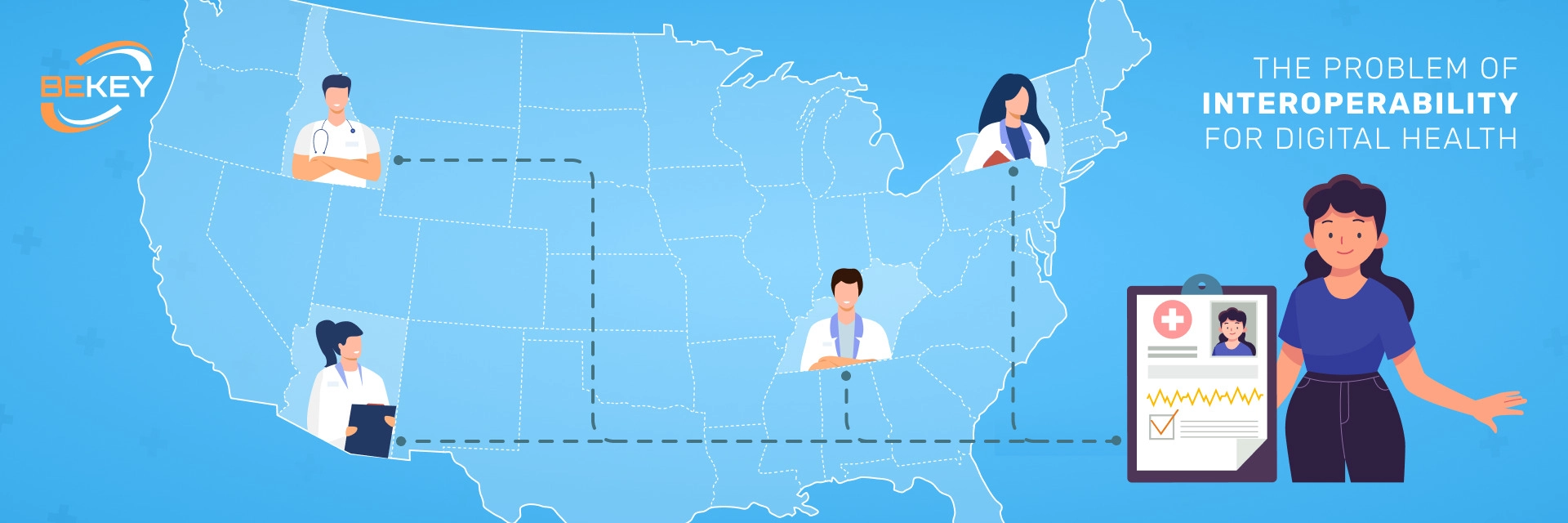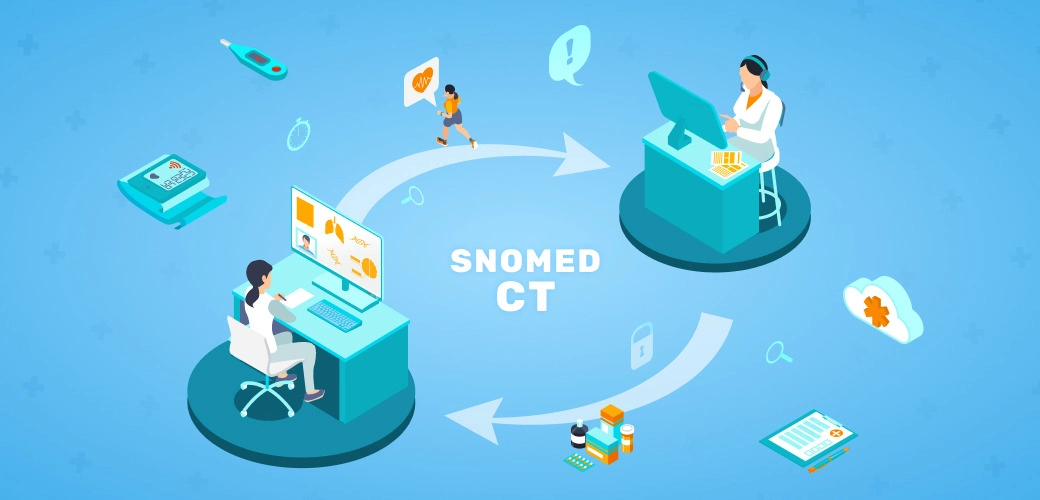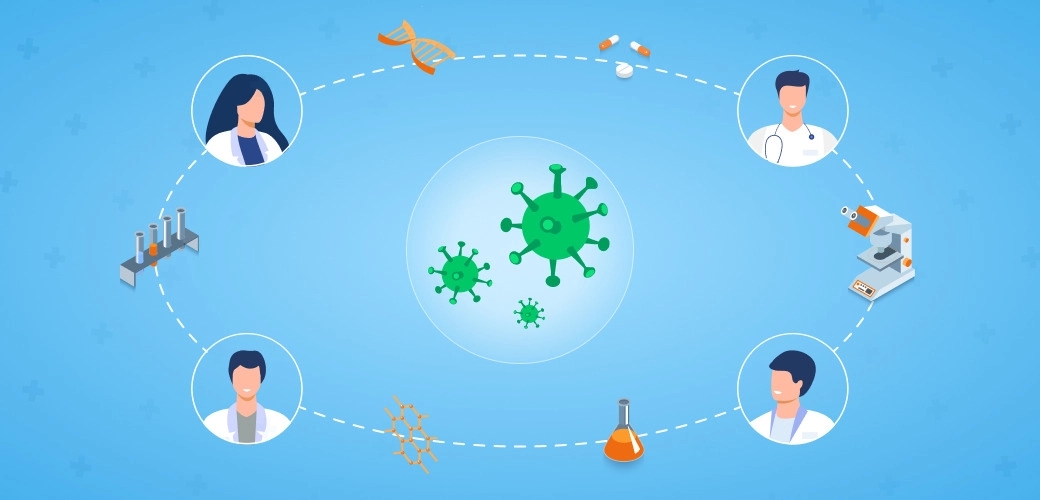

The Problem of Interoperability for Digital Health
We think it won’t be a surprise when we say that the general state of affairs in the healthcare system leaves much to be desired. Not without the help of the COVID pandemic, which not only does not subside, but in every possible way hints at its soon full return, medical organizations are not counting on the strength of the staff and, in fact, the staff themselves. Technologies have every chance to correct this picture and paint it somewhat in brighter colors. With the growing number of available options in digital health care, professionals are using more useful applications. This technological response to problems allows them to work faster, more dynamically, and better for the sake of quality, timely treatment, and happy patients.
Unfortunately, a significant amount of healthcare technology, while well-intentioned, is created in an information vacuum, which is impossible regarding patient care. Due to unconnected or incompatible services, vital information can get “stuck” somewhere in space at a very unnecessary moment — when a lot depends on it. Let’s imagine that the doctor at the patient’s appointment needs to get acquainted with his data. The specialist moves from one system to another, losing precious time and actually endangering human lives: not only the patient at the appointment but also those who wait a long time for their turn in sometimes urgent matters.
Through trial and error, the medical community has found an excellent solution to this challenge: interoperability. So what is it and why is it so important in digital health?
Why does Medical Interoperability Matter?
Interoperability serves as a bridge between different systems and large amounts of information. In this way, it takes on the problems of both patients and medical providers. Interoperability refers to the safe sharing of health data between all health care systems and organizations in the field. The amount of processed information is growing daily, doctors need to make important decisions based on it… The need for an integrated healthcare system has become even more evident, especially in the wake of the COVID-19 pandemic. The main interoperability caveat is to ensure that all electronic health record (EHR) systems “talk” to each other, allowing an emergency department in New York to look up the medical information of a sick tourist in London.
Through interoperability, tools can share planning information with each other through an application programming interface, providing a single patient user interface for greater cohesion. Therefore, the purpose of interoperability is to make sure that patients, their caregivers, and medical personnel have access to all the necessary information and services, in order to timely monitor the state of health and only make it better.
Is Even a Common Language Possible?
In order to avoid differences in international terminology so doctors of different countries could understand each other and the clinical pictures of patients without wasting time on adapting information, SNOMED CT was developed in 2007 — the most complete clinical terminology in the world.

With SNOMED CT, users can more accurately record patient data, and share patient data both within the medical team and with patients, both locally and internationally, to improve patient outcomes. In addition, stakeholders can use SNOMED CT in medical data and analytics platforms for clinical analytics, population analytics, management analytics, clinical research, applied research, and other research activities to improve healthcare.
The founders were Australia, Canada, Denmark, Lithuania, Sweden, the Netherlands, New Zealand, the United Kingdom, and the United States. Now the map has grown to 42 countries. It sounds promising, but what about the expansion of this topic if one of the founding countries — the United States of America — has not completely switched to SNOMED CT, but still uses Current Procedural Terminology (CPT) for EHR?
COVID-19 has Highlighted the Value of Interoperability
When a patient with COVID-19 rapidly transitions from general care to emergency one, time is of the essence: decisions and test data tracking must be done very quickly. Shared data greatly enhances the ability of healthcare providers to offer prompt and effective care to patients.
One of the surprisingly positive outcomes of the COVID-19 pandemic has been some improvement in interoperability in health data sharing. Long-term, expensive IT projects have been suspended or postponed to prioritize short-term projects with significant impact. They addressed the more pressing need for effective information flow between health care providers and systems. The most important of these projects focused on supporting patients in remote locations, such as their own homes. The information obtained significantly improved the provision of personalized assistance.

Prior to the pandemic, there was a weak and localized electronic exchange of basic diagnostic information with health care providers and other physicians. Since then, the telemedicine industry has grown financially from $3 billion to $250 billion and will reach $600 billion by 2024. Unlike previous flimsy attempts to share data in health care, the pandemic has forced all parties to work together quickly to find solutions.
What Key Interoperability Challenges Still Exist in Healthcare?
The main challenge of interoperability still remains the different technological needs and capabilities of each stakeholder in the healthcare system. Some organizations invest heavily in new data infrastructure, knowing that this is the future, while others struggle to maintain their legacy software.
Many of these systems are used by clinicians, which creates additional challenges: not all healthcare professionals enjoy dealing with multiple software systems. Sometimes organizations use cloud systems that do not support integration with legacy solutions, or vice versa.
The discrepancies between data formats caused by these integration issues cause additional complications in the workflow. Here are some other common healthcare compatibility issues:
conflicting data from a large number of sources;
impossibility of data format unification;
inability to support integration with legacy systems;
data misinterpretation and security risks.
Last but not least, the lack of actual cooperation and common understanding of the problem is one of the main obstacles to comprehensive interoperability. The problem is that healthcare organizations often see the process only within their competence, but do not observe the whole picture of the healthcare system and do not understand how it functions.
Although all these problems cannot be completely eliminated, industry professionals should still actively take steps to improve the situation. Lack of interoperability has already been proven to create gaps in medical records, hinder administrative work, frustrate clinicians, and pose a serious threat to data privacy and security.
Patients & Healthcare Professionals Will Definitely Appreciate It
In healthcare, not having access to data isn’t as scary as not having access to the necessary data at the necessary time. Let’s say that working on an urgent request for medical help, the doctor simply does not have time to use different tools. It is difficult for him to gather the information necessary to make a reasoned decision in a short time in this way. And this can directly affect the patient’s life. Therefore, it is better to keep all information about the patient in one specific place: from medical history to vital signs.
On the patient side, interoperability will make access to test results much easier. Many of us won’t understand and interpret abbreviations and acronyms in results, let alone how the actual results actually affect our health and well-being. Thanks to interoperability (and the application of artificial intelligence), the result can be easily interpreted by the patient, collecting real-time data from different clinics’ systems and an external database.
The healthcare industry is just now embracing full interoperability. So it is safe to say that most of the benefits of its implementation have probably not yet been realized. But the essence turns out to be very simple: you don’t need to copy, duplicate, store anything extra in your medical experience, or have nine different accounts on different portals. Healthcare should be a continuous process, and it’s exciting to see all the improvements that occur in this area due to interoperability.
Finalizing the Topic
The ability to securely connect data can facilitate anytime, anywhere care. When combined with advanced analytics, digital systems can be transformed into intelligent systems to improve integrated care. Integrating innovative digital technologies can help support and improve healthcare systems in diagnosis, treatment, surveillance, and public awareness.
While many healthcare facilities do not need to upgrade their IT infrastructure to achieve interoperability, the healthcare crisis is far from over. The ability of healthcare systems to rapidly implement digital solutions to address critical human disruptions underscores the fact that healthcare interoperability is not out of reach and does not require large investments in new and extensive IT infrastructure. Providers can meet the growing need for greater data sharing by leveraging existing capabilities and complementing them with off-the-shelf solutions, thereby improving accessibility and delivery of healthcare. Contact BeKey today to chart your path to more effective digital healthcare solutions.
Tell us about your project
Fill out the form or contact us

Thank you
Your submission is received and we will contact you soon
Follow us

